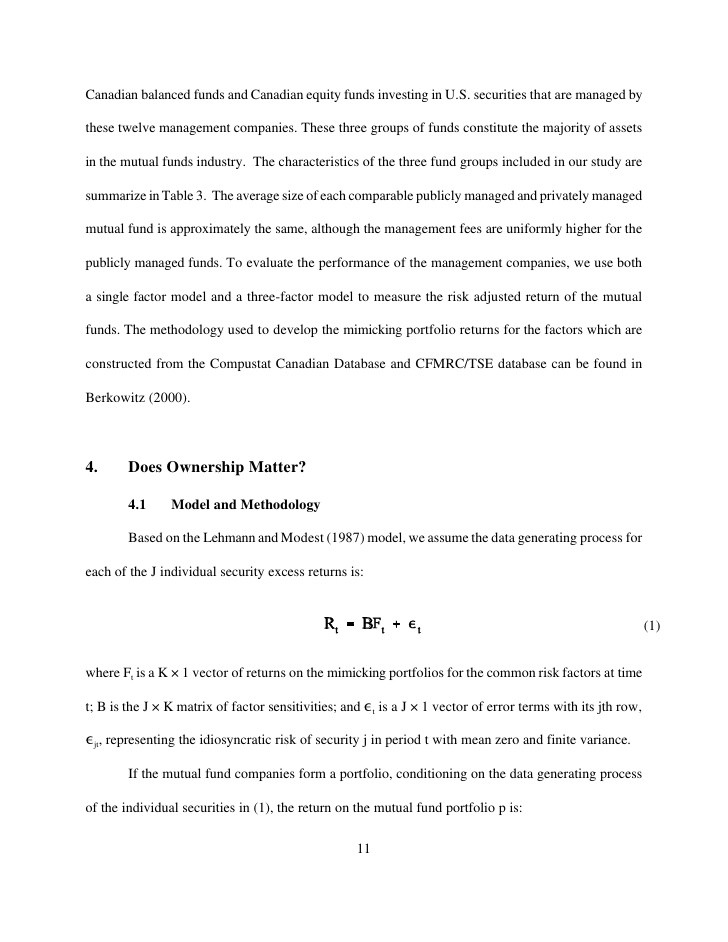Manager Risk Disadvantage of ActivelyManaged Mutual Funds
Post on: 4 Апрель, 2015 No Comment

Risk of Investing in Actively-Managed Mutual Funds (and How to Avoid It)
You can opt-out at any time.
Please refer to our privacy policy for contact information.
Definition: Manager risk is the risk that an actively-managed mutual fund will produce sub-par returns compared to a benchmark index, such as the S&P 500 Index. due to poor management decisions. This type of risk is primarily a result of human behavior, with secondary and related reasons that may include high expense ratios. high turnover ratios. and high assets under management.
The Behavioral Aspect of Manager Risk
Actively-managed mutual fund managers are human, which means they are susceptible to potentially destructive human emotions, such as greed, complacency and hubris. By nature, their job is to beat the market. which means that they must often take additional market risk to obtain the returns necessary to get above-average returns. This tends to increase chances of poorly timed trades. By comparison, there is no real risk of human error with an index fund manager because they simply match the holdings of an index—they do not try to beat the market or a certain benchmark, they only seek to match it.
Also, even the active fund manager that is able to avoid the trappings of their own human emotion can’t escape the irrational and often unpredictable nature of the investor herd—the collective of investors that make up the market. As the famed economist John Maynard Keynes once said, The market can remain irrational longer than you can remain solvent. In other words, the most experienced fund manager with the greatest knowledge, skill, and emotional intelligence cannot consistently and successfully navigate the insanity of the crowd. This craziness does not only apply to the downside of the market: Active fund managers often foresee a downturn in hot bull markets but they are early in their forecast and the market continues moving upward for long periods, causing the fund manager to miss out on large positive returns. In different words, the fund manager may have acted rationally in his or her decisions but the market remained irrational longer than anticipated.
Asset Bloat: The Risk of Being Too Large
Bigger is not always better when it comes to mutual funds. This is logical, foreseeable and too common: An actively-managed mutual fund performs well, it attracts more investors, the fund manager has to find more securities to buy, and the ability to navigate the market becomes comparable to that of a boat at sea: The larger boats hold more cargo but they move slower. This may be more profitable for the shipper but the passenger (investor)’s goal is to reach the destination as fast as possible while taking reasonable risk.
Larger Size Leads to More Turnover and Lower Returns
More investors means more money coming into and going out of the fund, which requires either having more cash on hand to meet withdrawal requests or more frequent trading or both. If the manager is forced to hold more cash, this can erode at portfolio returns. Also, heavier inflows and outflows of cash can lead to higher expenses in the form of trading costs. In different words, bigger things are more difficult and more expensive to manage than smaller things.
In addition, many large, actively-managed mutual funds end up with similar holdings as the S&P 500 Index. They may start out with 100 or 200 holdings but gradually move larger to 400 or 500 holdings. However the large-cap, actively managed fund still has a higher expense ratio and therefore falls behind the index.
How to Find the Best Fund Managers
When you are doing research to find the best actively-managed mutual funds for your portfolio, you are not actually looking for the best funds, you are looking for the best managers. If you look only at performance and ignore the manager tenure. you can make a significant mistake. For example, if a mutual fund has performed consistently above average for 5 years but the current manager has only been their for 5 months, you have bought a fund based upon something the current manager cannot take credit.
Again, even the best fund managers make mistakes and not all actively-managed funds lose to the major indexes. However the wise investor will expect the manager to be wrong for up to one year out of every three years. This is why it is best to look at the 3-year and 5-year returns, along with a statistical measure, called Alpha. You can find such statistical measures with any of the best online mutual fund research sites. Quite simply, you want to find a positive Alpha, which will indicate that the fund manager is producing returns that are higher than can be expected for its risk level. For example, a fund with average risk but above-average returns would have a positive Alpha. This measure is similar to the star rating from Morningstar.
Also, it can be a good sign when a fund manager decides to close a fund to new investors. This is because the manager wants to prevent the fund from getting too big and thus too difficult to manage in a prudent way for the existing shareholders.
Finally, a good research data point for actively-managed funds can be the Morningstar Stewardship Grade, which is a letter grade with ‘A’ being the best and ‘F’ being the worst. The grade is based in part on manager behavior and incentives. For example, if a manager invests his or her own money in the fund and they have an incentive program based upon long-term growth, rather than short-term growth, the Stewardship Grade will be higher.
Disclaimer: The information on this site is provided for discussion purposes only, and should not be misconstrued as investment advice. Under no circumstances does this information represent a recommendation to buy or sell securities.














